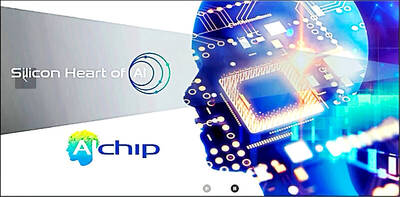The Taiwan High Speed Rail Corp (THSRC, 台灣高鐵) said yesterday it will pay Eurotrain US$65 million in compensation for dumping the consortium and choosing a Japanese consortium to build Taiwan's high-speed rail system.
THSRC posted the settlement agreement on the Taiwan Stock Market online bulletin board.
"Following arbitration by an international arbitration court, THSRC agrees to pay US$65 million to Eurotrain, which -- plus interest -- totals US$89 million," the document said.
THSRC's press office said the arbitration was made on March 5 by an international arbitration court in Singapore.
Compared with an arbitration ruled by the International Chamber of Commerce (ICC) early this year, the new settlement saves THSRC US$24 million, according to THSRC. Eurotrain filed for arbitration with the ICC in 2001.
The ICC issued an arbitration award on March 15, 2004, wherein THSRC was ordered to pay US$73.04 million in damages and interest to Eurotrain.
Eurotrain -- a consortium led by Germany's Siemens AG and France's Alsthom -- claims THSRC gave it priority negotiating rights for building Taiwan's first high-speed rail in 1997, but awarded the US$14-billion-contract to a Japanese consortium in 1999. But THSRC denied there was any contract.
The 345km railway linking Taipei to Kaohsiung is scheduled to start operating in October next year.
There were rumors that THSRC favored Japan's Shinkansen system over Eurotrain because former president Lee Teng-hui (李登輝) wanted to forge closer ties with Japan, but THSRC denied there were political considerations.

To many, Tatu City on the outskirts of Nairobi looks like a success. The first city entirely built by a private company to be operational in east Africa, with about 25,000 people living and working there, it accounts for about two-thirds of all foreign investment in Kenya. Its low-tax status has attracted more than 100 businesses including Heineken, coffee brand Dormans, and the biggest call-center and cold-chain transport firms in the region. However, to some local politicians, Tatu City has looked more like a target for extortion. A parade of governors have demanded land worth millions of dollars in exchange

An Indonesian animated movie is smashing regional box office records and could be set for wider success as it prepares to open beyond the Southeast Asian archipelago’s silver screens. Jumbo — a film based on the adventures of main character, Don, a large orphaned Indonesian boy facing bullying at school — last month became the highest-grossing Southeast Asian animated film, raking in more than US$8 million. Released at the end of March to coincide with the Eid holidays after the Islamic fasting month of Ramadan, the movie has hit 8 million ticket sales, the third-highest in Indonesian cinema history, Film

Taiwan Semiconductor Manufacturing Co’s (TSMC, 台積電) revenue jumped 48 percent last month, underscoring how electronics firms scrambled to acquire essential components before global tariffs took effect. The main chipmaker for Apple Inc and Nvidia Corp reported monthly sales of NT$349.6 billion (US$11.6 billion). That compares with the average analysts’ estimate for a 38 percent rise in second-quarter revenue. US President Donald Trump’s trade war is prompting economists to retool GDP forecasts worldwide, casting doubt over the outlook for everything from iPhone demand to computing and datacenter construction. However, TSMC — a barometer for global tech spending given its central role in the

Alchip Technologies Ltd (世芯), an application-specific integrated circuit (ASIC) designer specializing in server chips, expects revenue to decline this year due to sagging demand for 5-nanometer artificial intelligence (AI) chips from a North America-based major customer, a company executive said yesterday. That would be the first contraction in revenue for Alchip as it has been enjoying strong revenue growth over the past few years, benefiting from cloud-service providers’ moves to reduce dependence on Nvidia Corp’s expensive AI chips by building their own AI accelerator by outsourcing chip design. The 5-nanometer chip was supposed to be a new growth engine as the lifecycle